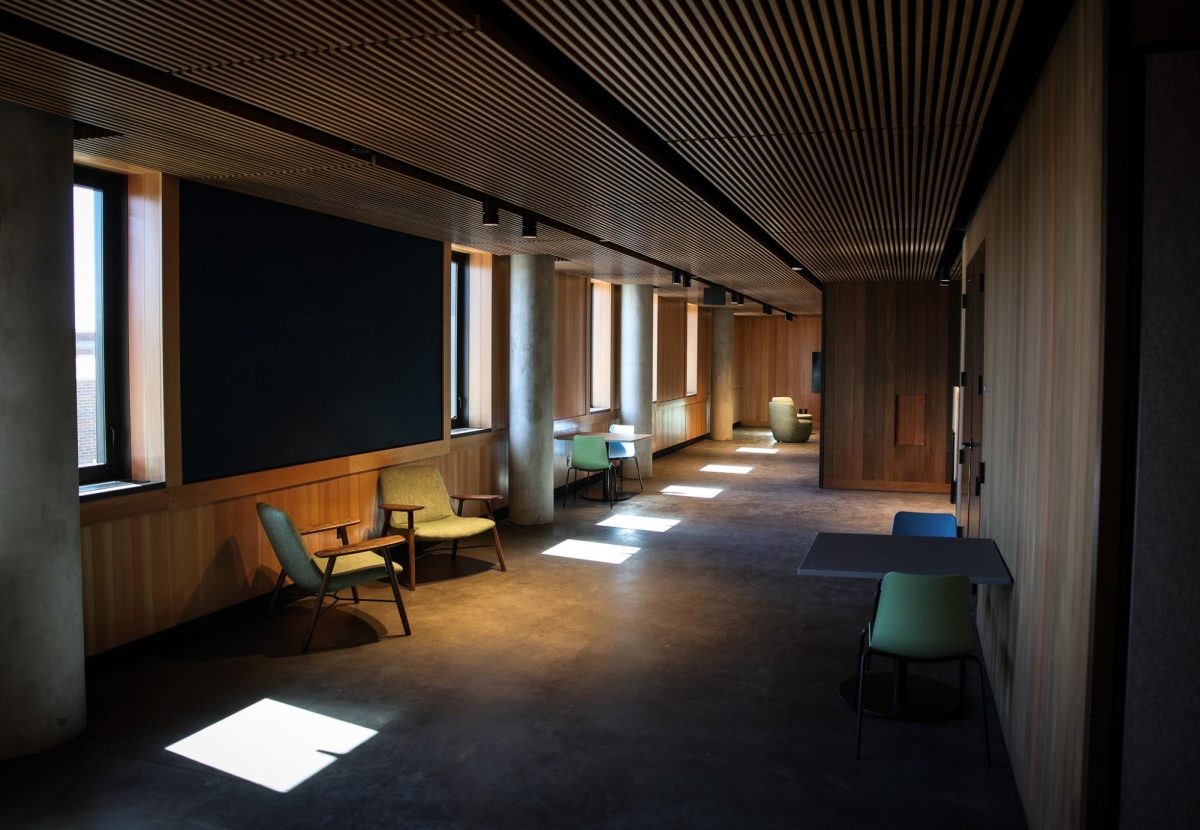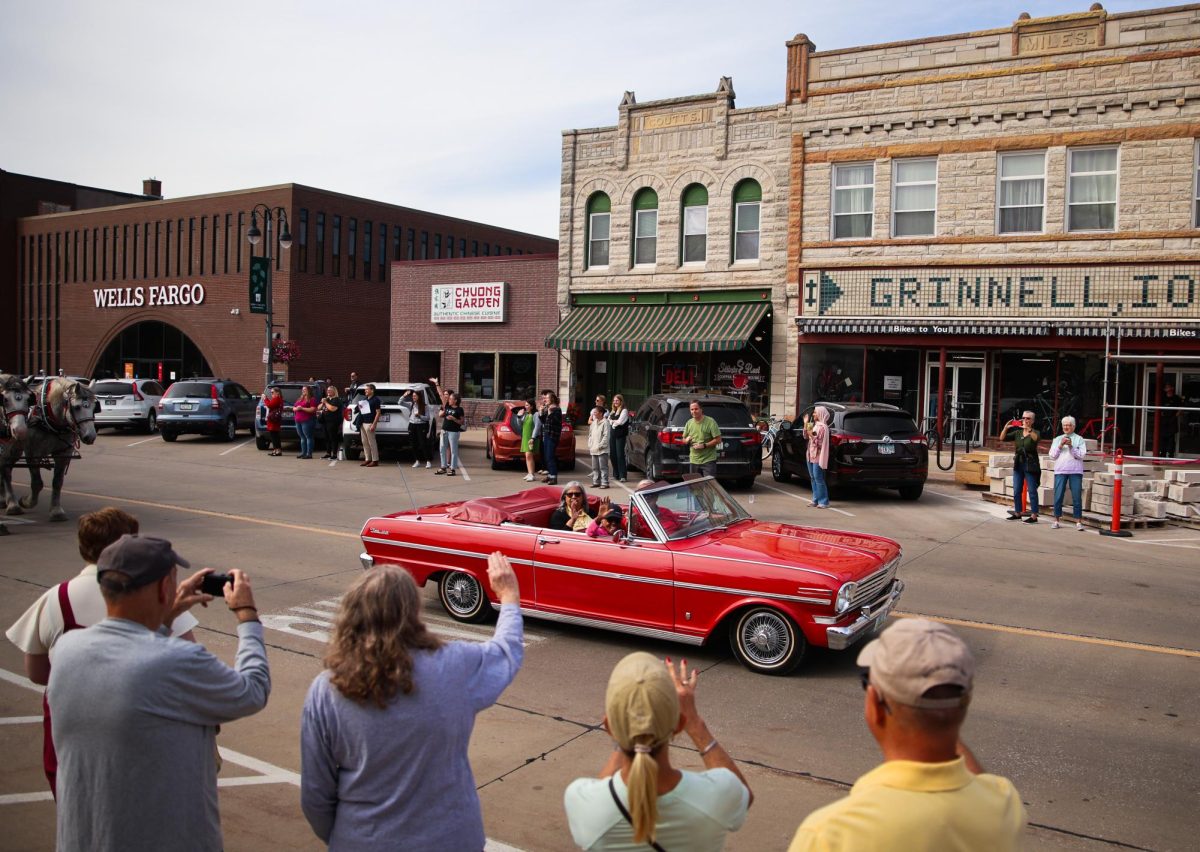
By Hannah Agpoon
agpoonha@grinnell.edu
Before Euro-Americans settled the great state of Iowa, the state’s landscape was quite different. The subtle, rolling hills that are now covered in neat rows of various crops were once carpeted in beautiful grasses and wildflowers, all of which rustled with the wind and changed colors with the seasons. The vast prairie once covered about 85 percent of the state’s area, but today, less than 0.1 percent of the original tallgrass prairie remains.
In 1990, Neal Smith, who was a congressman at the time, established the Neal Smith National Wildlife Refuge after being a longtime advocate for its existence. The Refuge, which sits on 5,600 acres of land, aims to restore and protect the native habitats that once existed on the Refuge, including tallgrass prairie, oak savanna and sedge meadow ecosystems.
Although the Neal Smith National Wildlife Refuge (NWR) is less than an hour’s drive from Grinnell, the landscape is an entirely different type of picturesque. As the seasons change, the flora and fauna that thrive in the tallgrass prairie at the Refuge change as well. Many wildflowers are still in bloom, including the sawtooth sunflower, goldenrod and aster. Monarchs begin their journey south along with the many migratory birds that populate the Refuge.
Wildlife Biologist Karen Viste-Sparkman has worked with the Wildlife Refuge for about thirteen years now, and she believes that what truly sets the Refuge apart from other natural areas around Iowa is that it hosts some unique species of wildlife that are not commonly seen around other parts of the state. “[I]t was part of Neal Smith’s vision to have bison and elk here, and we have both,” says Viste-Sparkman. “Especially in the tallgrass prairie, that’s a unique initiative.”
Viste-Sparkman reports that there are currently 52 adult bison and 13 calves that roam the 800-acre area of prairie refuge. With a road running through the fenced-in plot of land, visitors are often able to spot both elk and bison from the safety and comfort of their vehicles.
Viste-Sparkman notes that the Wildlife Refuge ships yearlings to other locations in order to control the population and prevent a bottleneck effect, a type of biological crisis where a population suddenly decreases due to environmental factors. Aside from that, however, the bison are left to their own devices and treated as much like natural wildlife as possible.
“They mate, they have babies, the bulls will fight and even kill each other sometimes,” says Viste-Sparkman. “We don’t have predators here, like wolves and grizzly bears, but they do have some natural processes that occur with the fighting. And we try to keep an eye on them, especially if there’s an injured one … but usually they just kinda take care of themselves.”
The symbiotic relationship between the bison and their habitat on the Neal Smith NWR is exceptionally beautiful. The bison eat the tallgrasses of the prairie, which helps prevent competition amongst grass species while also stimulating new growth. Without the presence of the grasses, bison would have nothing to eat, and without the bison meandering across the prairie, the grasses would not be as diverse as a population.
In the fall, the prairie itself undergoes a striking transformation as grasses fade from green to purple to rusty red, before finally settling into a rich, yellow ochre shade. Fall is an important time in the restorative process that the Neal Smith NWR is undergoing. Refuge staff conduct burns of the prairie in an effort to simulate the natural processes and maintain healthy growth of prairie grasses. They also oversee the annual bison roundup wherein they account for each individual bison and see how the population is doing. One of the biggest rewards that fall brings to the Refuge is the arrival of new seed. Employees and volunteers of the Refuge collect seed, which is then planted in new areas the following spring to increase diversity within the prairie.
“[W]e figured out that the seed is worth … $30 to 50,000 a year, and it’s mostly collected by volunteers,” said Viste-Sparkman.
The impact of these volunteer events is profound. The Neal Smith NWR is hosting two upcoming seed-collecting events, including one on Saturday, Sept. 28, and one on Saturday Oct. 12, both from 8:30 a.m. to 12:00 p.m. The Prairie Learning and Visitor Center is open every day from 9 a.m. to 4 p.m., and admission into the Neal Smith National Wildlife Refuge is free of charge. For more information, visit https://www.fws.gov/refuge/Neal_Smith/.



















































